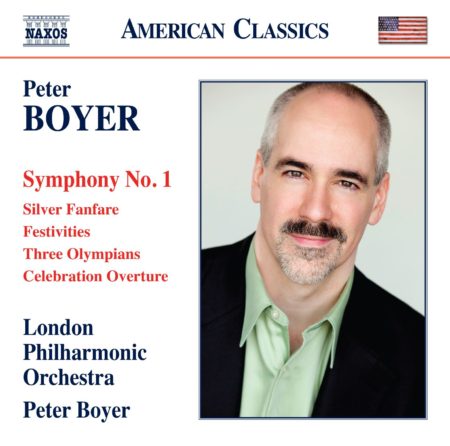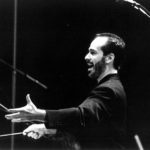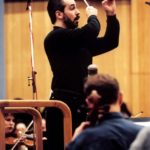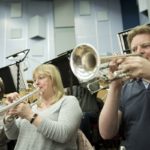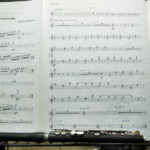– The Star Press (Indiana)
Celebration Overture was one of Peter Boyer’s earliest orchestral commissions, celebrating the opening of the Henry Mancini Institute in 1997, when he was just 27. It has gone on to become one of his most performed works. Boyer recorded it twice at Abbey Road Studios: the original version on his debut recording with the London Symphony Orchestra in 2001, and the revised version on his Naxos recording with the London Philharmonic Orchestra in 2013. Celebration Overture has become quite popular on American classical radio, with both of Boyer’s recordings, and a live recording by Miguel Harth-Bedoya and the Fort Worth Symphony Orchestra released in 2012, receiving a combined total of thousands of broadcasts over many stations. It is a particular favorite on SiriusXM’s Symphony Hall channel.
Instrumentation
2.picc.2.3(III=bcl).2—4.4.4(IVopt).1—timp.perc(3)—harp—pft—strings
Duration
6:40
Composition Date and Commission
Composed 1997; Revised 2001
Commissioned by the American Jazz Philharmonic for the inaugural season of its Henry Mancini Institute
Critical Acclaim
“Boyer’s stated reverence for film composers…is clearly palpable in Celebration Overture. The opening Korngoldian fanfare for four trumpets has an epic silver-screen sumptuousness. This is a marvelous curtain-raiser…”
— South Florida Sun-Sentinel
“The sparking Celebration Overture… composed by Peter Boyer, lit up the stage with musical pyrotechnics…”
— Kalamazoo Gazette
“Peter Boyer’s exuberant Celebration Overture [is] a winner of a piece, heavy on brass and percussion, with great rhythmic vitality and a contrasting pensive middle section with caressing strings.”
— Fort Worth Star-Telegram
“With a rousing Celebration Overture by American composer Peter Boyer, the Fort Worth Symphony Orchestra launched its 2010-11 season… Boyer is the FWSO’s composer-in-residence this season. His 7-minute overture, dating from 1997, seems to be channeling Leonard Bernstein. Excited brassy fanfares give way to a stately section spun out of a three-note motif introduced by horns. That motif is later expanded into a romantic oboe solo over deep-plush strings and harp. A reprise of the opening fanfares brings the piece to a dazzling coda.”
— The Dallas Morning News


